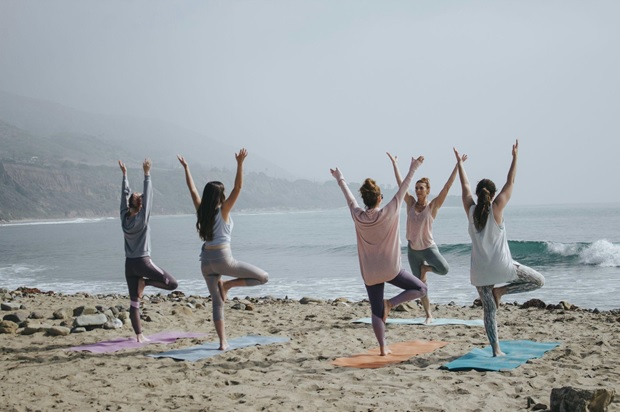Place your adverts here on InfoDig @ low rates; banner ads, sponsored links and guest articles etc. Contact us
As we age, maintaining health and mobility becomes crucial for improving quality of life and ensuring longevity. Seniors often face unique health challenges such as reduced muscle mass, decreased bone density, and chronic conditions that may hinder daily activities. However, incorporating regular exercise into a routine can significantly improve physical and mental well-being. Whether you are looking to maintain independence or manage existing health conditions, staying active is one of the most effective ways to enhance your quality of life in your senior years.
Benefits of Regular Exercise for Seniors
Exercise offers a wide range of benefits for seniors, both physically and mentally. Below are some of the key advantages of staying active during your golden years:
- Improved Cardiovascular Health: Regular aerobic activities such as walking, swimming, or cycling help strengthen the heart and improve circulation. This reduces the risk of heart disease, high blood pressure, and stroke, which are common concerns among older adults.
- Increased Muscle Strength: As we age, we naturally lose muscle mass, leading to weakness and a higher risk of falls. Strength training exercises, such as lifting light weights or using resistance bands, can help rebuild muscle, making daily tasks easier and reducing the risk of injuries.
- Better Bone Density: Osteoporosis and bone fractures are significant concerns for seniors. Weight-bearing exercises like walking or strength training help maintain and even improve bone density, reducing the risk of fractures and bone-related injuries.
- Enhanced Balance and Flexibility: Balance and coordination often decline with age, which can lead to falls and injuries. Exercises such as yoga or tai chi are excellent for improving balance and flexibility, helping seniors stay steady on their feet.
- Weight Management: Staying active helps prevent weight gain and reduces the risk of obesity, which can lead to other health complications like diabetes or heart disease. A healthy weight also eases the strain on joints, making it easier to move without pain.
- Improved Mental Health: Exercise has been proven to reduce symptoms of anxiety, depression, and stress. Physical activity boosts endorphins—natural mood lifters—and can create a sense of accomplishment, improving mental clarity and emotional well-being.
- Enhanced Cognitive Function: Studies have shown that regular exercise can help preserve brain function as we age, reducing the risk of cognitive decline and conditions such as Alzheimer’s disease. Activities that engage both the body and the mind, like dancing or certain sports, are particularly beneficial.
Tailoring an Exercise Routine for Seniors
While the benefits of exercise for seniors are undeniable, it’s essential to approach fitness with caution to avoid injury. Here are some tips to help seniors create a safe and effective workout routine:
- Consult a Healthcare Provider: Before starting any new exercise program, it’s crucial to consult with a healthcare professional, especially if you have pre-existing conditions such as arthritis, heart disease, or joint pain. A medical professional can recommend exercises that are safe and effective for your specific needs.
- Start Slowly: If you’re new to exercise or haven’t been active in a while, begin with low-impact activities such as walking or water aerobics. Gradually increase the intensity and duration of your workouts as your fitness level improves.
- Focus on Balance and Flexibility: Incorporating activities that enhance balance and flexibility, such as yoga, stretching, or tai chi, can help reduce the risk of falls and improve your overall mobility.
- Strength Training is Key: Include strength training exercises at least two times a week to help maintain muscle mass and improve strength. These exercises can be done using light weights, resistance bands, or bodyweight movements such as squats and lunges.
- Stay Hydrated and Take Breaks: Seniors are more susceptible to dehydration, so it’s important to drink plenty of water before, during, and after exercise. Additionally, take breaks when needed to avoid overexertion.
- Find Activities You Enjoy: Exercise doesn’t have to be a chore! Whether it’s gardening, dancing, or joining a local walking group, find activities that you enjoy, making it easier to stay consistent.
The Role of Arizona Long-Term Care in Senior Fitness
For seniors who may need additional support, Arizona long-term care services can play a critical role in helping them maintain an active lifestyle. Long-term care facilities and in-home care providers often offer tailored fitness programs, physical therapy, and guided exercises to support seniors in staying mobile and active. By incorporating fitness into the daily routine, these care programs can significantly enhance the health and well-being of older adults, ensuring they remain physically active while receiving the necessary care and supervision.
The Social Aspect of Exercise

Another significant benefit of exercise is the social interaction it can provide. Group fitness classes, walking groups, or community sports are excellent ways for seniors to engage with others while staying active. Maintaining social connections is important for mental health and can reduce feelings of loneliness or isolation, which are common among older adults. Exercising with a friend or joining a local fitness class can also help with motivation and accountability, ensuring you stick to your routine.
Overcoming Barriers to Exercise
Despite its many benefits, seniors may face challenges when trying to stay active. Physical limitations, chronic conditions, or fear of injury can deter seniors from starting a fitness routine. Here are some solutions to common barriers:
- Limited Mobility: For seniors with mobility issues, chair exercises or water-based activities can be a great alternative. These activities are low-impact and reduce strain on joints, while still providing the benefits of exercise.
- Lack of Motivation: Setting small, achievable goals and tracking progress can help seniors stay motivated. Celebrate the little wins, like walking an extra block or lifting a heavier weight, to keep morale high.
- Fear of Injury: Start slowly and listen to your body. Incorporating balance and strength exercises can help build confidence and reduce the fear of falls or injury.
Conclusion
Staying active is one of the best ways to improve longevity and maintain independence during the senior years. With the right approach, exercise can offer seniors a path to better health, enhanced cognitive function, and improved emotional well-being. Whether you’re just starting out or looking to refine your current routine, it’s never too late to experience the benefits of fitness. By incorporating regular exercise into your daily life—and with the support of services like Arizona long-term care—you can enjoy a healthier, happier future.















 English (US) ·
English (US) ·